Best Gardening Tools Every Gardener Needs
Discover the essential Best Gardening Tools every gardener needs. From hand tools to power equipment, learn which garden implements.
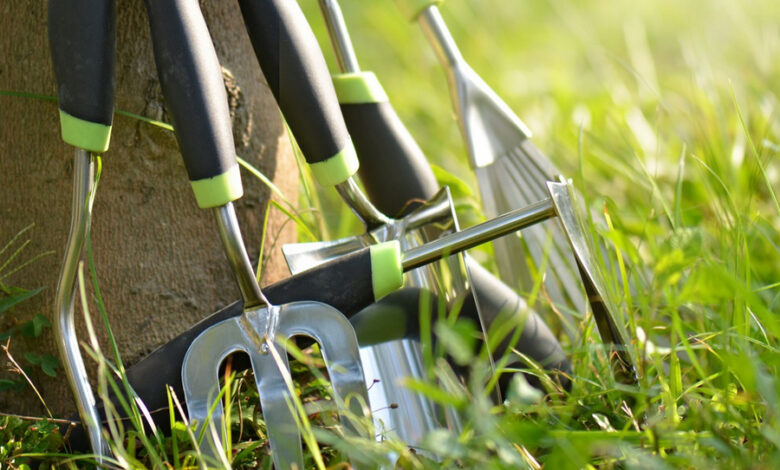
Gardening is one of life’s most rewarding pursuits, offering fresh produce, beautiful flowers, and a deep connection with nature. However, having the right equipment can make the difference between a thriving garden and a frustrating struggle against weeds, hard soil, and unruly plants. Whether you’re a beginner starting your first vegetable patch or an experienced horticulturist expanding your botanical empire, understanding which best gardening tools is crucial for success.
The world of garden implements can be overwhelming, with countless options available in every hardware store and online marketplace. From basic hand tools to sophisticated power equipment, the variety of gardening tools available today can leave even seasoned gardeners confused about what they actually need versus what’s simply nice to have. This comprehensive guide will help you navigate through the essential equipment that should form the foundation of any well-equipped garden shed.
Investing in quality garden tools is not just about convenience – it’s about efficiency, plant health, and your own physical well-being. The right tools can prevent back strain, reduce the time needed for garden maintenance, and help you achieve better results with less effort. Poor-quality implements, on the other hand, can break when you need them most, damage your plants, and turn gardening from a pleasure into a chore.
Throughout this article, we’ll explore the essential gardening tools that every gardener should own, explain why each tool is important, and provide guidance on what features to look for when making your selections. We’ll cover everything from basic hand tools that fit in a small toolkit to larger equipment that can transform how you approach garden maintenance. By the end of this guide, you’ll have a clear understanding of which garden implements deserve space in your storage area and which ones can wait for later additions to your collection.
Essential Hand Tools for Every Garden
Garden Trowel: The Gardener’s Best Friend
No discussion of best gardening tools would be complete without starting with the humble garden trowel. This small, handheld implement is arguably the most versatile and frequently used tool in any gardener’s arsenal. A quality trowel serves multiple purposes: transplanting seedlings, digging small holes for bulbs, weeding around established plants, and mixing soil amendments in containers.
When selecting a trowel, look for one with a sturdy metal blade that won’t bend under pressure. Stainless steel trowels resist rust and clean easily, while carbon steel options hold a sharper edge. The handle should feel comfortable in your grip and provide adequate leverage. Many gardeners prefer trowels with measurement markings on the blade, which help ensure consistent planting depths for seeds and bulbs.
The blade width and shape also matter significantly. Narrow blades work better for precision work around delicate plants, while wider blades move more soil quickly for larger planting holes. Some gardening tools manufacturers offer trowels with serrated edges, which can help cut through roots and tough soil more effectively than smooth-bladed versions.
Pruning Shears: Precision Cutting Power
Garden tools for cutting and pruning are absolutely essential for maintaining plant health and encouraging proper growth. Pruning shears, also known as secateurs, should be among the first essential gardening tools any gardener purchases. These handheld cutters handle tasks ranging from deadheading flowers to pruning small branches and harvesting vegetables.
There are two main types of pruning shears: bypass and anvil. Bypass shears work like scissors, with two curved blades that slide past each other, making clean cuts that heal quickly. Anvil shears have one sharp blade that cuts down onto a flat surface, which can crush stems but works well for dead wood. Most gardening experts recommend bypass shears for general use because they cause less damage to living tissue.
Quality pruning shears should feel balanced in your hand and require minimal effort to operate. Look for models with replaceable blades and springs, as these components wear out over time. The cutting capacity should match your needs – most home gardeners do well with shears that can cut branches up to three-quarters of an inch in diameter.
Garden Fork: Breaking Ground and Moving Materials
A garden fork is one of those garden implements that proves its worth repeatedly throughout the growing season. Unlike a shovel, which cuts through soil, a fork penetrates and loosens earth without completely turning it over. This action preserves soil structure while improving drainage and root penetration.
Hand forks, typically 6-12 inches long, excel at working in tight spaces, cultivating around established plants, and breaking up compacted soil in containers. Full-sized garden forks, with handles 3-4 feet long, tackle heavier duties like turning compost piles, aerating large planting beds, and incorporating organic matter into garden soil.
When choosing a fork, consider the tine configuration. Forks with four tines provide good stability and work well in most soil types, while those with more tines move through loose soil more easily but may struggle in clay. The tines should be strong enough to penetrate hard soil without bending, and the connection between tines and handle should be robust enough to handle leverage forces.
Digging and Cultivation Tools
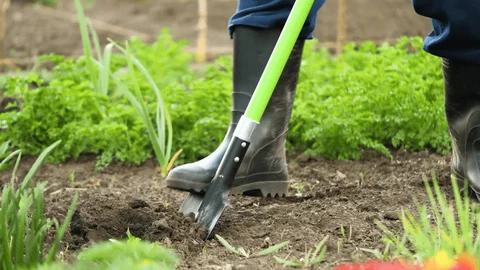
Spade vs. Shovel: Understanding the Difference
Many gardeners use the terms “spade” and “shovel” interchangeably, but these gardening tools serve different purposes and have distinct design features. Understanding these differences helps you choose the right tool for specific tasks and avoid frustration in the garden.
A spade has a flat, rectangular blade designed for cutting clean edges, slicing through roots, and moving precise amounts of soil. The blade typically measures 7-8 inches wide and 10-12 inches long, providing excellent control for detailed work. Spades work best for edging flower beds, transplanting shrubs, and creating planting holes with straight sides.
Shovels, in contrast, have curved or pointed blades designed for moving loose materials like soil, mulch, gravel, or compost. The curved shape helps contain materials during transport, while pointed blades penetrate hard or rocky soil more easily than flat ones. Round-point shovels excel at digging, while square-point shovels move materials more efficiently.
Both tools should have handles long enough to provide adequate leverage without forcing you to bend excessively. Fiberglass and steel handles typically outlast wood, though wooden handles can be more comfortable during extended use. The connection between blade and handle is critical – look for solid socket construction or reinforced attachment points.
Hoes: Cultivation and Weed Control
Hoes rank among the most important essential gardening tools for maintaining clean, productive growing areas. These implements help control weeds, cultivate soil around plants, and create furrows for planting seeds. The variety of hoe designs available reflects the many specific tasks these tools can perform.
The traditional draw hoe, with its wide blade set at roughly a 90-degree angle to the handle, excels at chopping weeds and moving soil. You pull this type of hoe toward yourself, using its sharp edge to sever weed stems just below the soil surface. This cutting action is most effective when weeds are small and soil conditions are relatively dry.
Stirrup hoes, also called scuffle hoes, have a loop-shaped blade that cuts both on the push and pull strokes. This design allows for faster cultivation and requires less effort than traditional hoes. The oscillating action works well in loose soil and around established plants where precision is important.
Wheel hoes represent a more specialized category of garden tools, featuring a wheel that makes pushing easier and often including interchangeable attachments for different cultivation tasks. While not essential for small gardens, wheel hoes can significantly reduce labor in larger growing areas.
Rake: Gathering and Leveling
Rakes serve multiple purposes in the garden, making them valuable additions to any collection of garden implements. The most common types include leaf rakes for gathering debris and garden rakes for soil preparation and maintenance.
Leaf rakes have flexible tines that conform to ground contours, making them excellent for gathering fallen leaves, grass clippings, and other light debris without damaging lawn surfaces. The tine material varies from metal to bamboo to plastic, each offering different advantages. Metal tines last longest but can damage delicate surfaces, while bamboo and plastic options are gentler but may not last as long.
Garden rakes, also called bow rakes or level rakes, have rigid steel tines arranged in a straight line. These tools level soil, break up small clods, incorporate amendments, and prepare seedbeds. The spacing and length of tines affect performance – closer spacing provides a smoother finish, while longer tines penetrate deeper and work better in loose soil.
Watering and Irrigation Equipment
Garden Hoses: Flexibility and Durability
Proper watering equipment forms the backbone of successful gardening, and a quality garden hose ranks among the most important best gardening tools. The right hose delivers water efficiently while lasting through seasons of use, coiling, and exposure to weather extremes.
Hose diameter significantly affects water flow and pressure. Standard diameters include 5/8-inch, 3/4-inch, and 1-inch, with larger diameters delivering more water but weighing more and costing more. For most home gardens, 5/8-inch hoses provide adequate flow while remaining manageable. The length should cover your garden area without excess – longer hoses lose pressure and become harder to maneuver.
Material construction determines durability and flexibility. Rubber hoses typically last longest and remain flexible in cold weather, but cost more and weigh more than alternatives. Vinyl hoses cost less but may crack in freezing temperatures and kink more easily. Reinforced hoses with multiple layers offer good compromises between durability and affordability.
Coupling quality often determines hose longevity more than the hose itself. Brass couplings resist corrosion better than plastic and create more secure connections. Some manufacturers offer crush-proof couplings that withstand being run over by wheelbarrows or mowers.
Watering Cans and Sprinklers
While hoses provide convenience and reach, watering cans offer precision and control that make them essential gardening tools for many tasks. Hand-watering allows you to deliver exact amounts of water to specific plants, apply liquid fertilizers accurately, and avoid wetting foliage when necessary.
Watering can capacity should match your strength and garden size. Two-gallon cans hold enough water for substantial watering sessions but become heavy when full. One-gallon cans require more trips but remain manageable for most gardeners. The spout design affects water distribution – removable roses (the perforated attachment) provide gentle, rain-like coverage for seedlings, while removing the rose creates a steady stream for targeted watering.
Material choices include plastic, metal, and occasionally ceramic. Plastic cans weigh less and resist rust, but may become brittle after years of sun exposure. Metal cans last longer and often have more attractive appearances, but eventually rust and weigh more when full.
Sprinklers extend your watering reach and provide hands-free operation, making them valuable garden implements for larger areas. Oscillating sprinklers cover rectangular areas effectively, while rotating sprinklers work better for circular coverage. Impact sprinklers handle low water pressure better than other types and typically last longer, though they may be noisier during operation.
Cutting and Pruning Tools
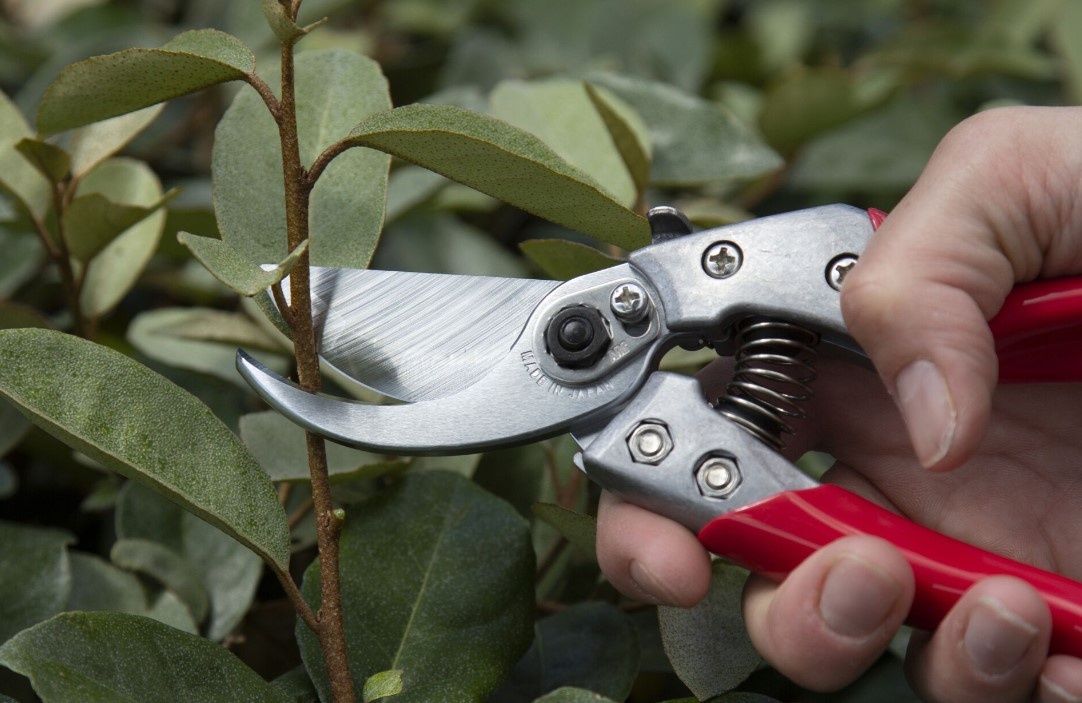
Loppers: Heavy-Duty Branch Cutting
When pruning tasks exceed the capacity of handheld shears, loppers become essential gardening tools for maintaining trees, shrubs, and large perennial plants. These long-handled cutters provide the leverage needed to cut branches up to 2 inches in diameter while keeping your hands away from thorny or hard-to-reach areas.
Like pruning shears, loppers come in bypass and anvil configurations. Bypass loppers make cleaner cuts that heal faster, while anvil types handle dead wood effectively but may crush living branches. The cutting head design varies among manufacturers, with some offering gear mechanisms that multiply cutting force or ratcheting actions that let you cut large branches in stages.
Handle length affects both reach and leverage. Longer handles provide more cutting power but become unwieldy in tight spaces. Most gardeners find 24-30 inch handles provide good balance between power and maneuverability. Telescoping handles offer adjustable length but may be less durable than fixed-length alternatives.
Weight distribution matters during extended use. Well-balanced loppers reduce fatigue and provide better control. Some models include shock-absorbing bumpers that reduce the jarring impact when cutting through branches, which helps prevent repetitive stress injuries during heavy pruning sessions.
Pruning Saws: Tackling Large Branches
For branches too large for loppers, pruning saws become necessary garden tools for proper tree and shrub maintenance. These specialized saws cut more efficiently than regular woodworking saws because their teeth are designed to cut living wood without binding in green wood or bark.
Folding pruning saws offer portability and safety, with blades that lock in both open and closed positions. Fixed-blade saws typically cut faster due to their rigid construction, but require sheaths for safe storage and transport. Blade length should match your typical cutting needs – 6-8 inch blades handle most home garden tasks, while longer blades cut faster through large branches but may be harder to control in tight spaces.
Tooth configuration affects cutting speed and effort required. Aggressive tooth patterns cut faster but require more effort to start cuts and may tear bark. Finer teeth start cuts more easily and leave smoother finishes, but cut more slowly through large branches. Some manufacturers offer curved blades that follow natural cutting motions more comfortably than straight blades.
Maintenance and Storage Tools
Tool Maintenance: Keeping Equipment Sharp
Quality gardening tools represent significant investments that can last decades with proper care and maintenance. Regular cleaning, sharpening, and storage practices extend tool life while ensuring optimal performance when you need it most.
Cleaning should happen after each use, especially when working with diseased plants or in muddy conditions. A wire brush removes dried soil and plant debris, while a spray bottle with soapy water handles stubborn residues. Some gardeners keep a bucket of sand mixed with motor oil in their garden shed for quick tool cleaning and rust prevention.
Sharpening maintains cutting efficiency and reduces the effort required for digging, chopping, and cutting tasks. Files work well for most blade maintenance, while whetstones provide finer edges for cutting tools. The sharpening angle should match the original factory bevel – typically 20-30 degrees for most garden tools. Power grinders can speed the process but require care to avoid overheating and damaging blade temper.
Oil application prevents rust and keeps moving parts functioning smoothly. Light machine oils work well for most applications, while heavier greases suit gear mechanisms and pivot points. Wooden handles benefit from occasional applications of linseed oil or specialized handle conditioners that prevent cracking and splintering.
Storage Solutions: Protecting Your Investment
Proper storage protects garden implements from weather damage while keeping them organized and easily accessible. The storage system should accommodate your tool collection while fitting available space and budget constraints.
Wall-mounted storage systems maximize floor space while displaying tools for easy selection. Pegboard systems offer flexibility for changing tool collections, while custom-built racks can accommodate specific tools perfectly. Magnetic strips work well for small metal tools but may not hold larger implements securely.
Garden sheds provide protected storage for entire tool collections plus supplies like fertilizer, seeds, and potting soil. When selecting or building a shed, consider ventilation to prevent condensation and mold, lighting for evening or early morning access, and security to protect valuable equipment. Shelving systems and tool racks inside sheds keep equipment organized and prevent damage from tools leaning against each other.
Portable storage options work well for gardeners with limited permanent storage space or those who garden in multiple locations. Tool bags and garden totes keep frequently used essential gardening tools together while protecting them during transport. Rolling tool chests provide secure storage with easy mobility for larger tool collections.
Specialized Tools for Specific Tasks
Wheelbarrows and Garden Carts
Moving materials efficiently around the garden requires appropriate transport equipment, making wheelbarrows and garden carts valuable Best gardening tools. These implements save time and prevent injury when moving soil, compost, plants, and harvested crops.
Traditional wheelbarrows feature single front wheels and two handles, providing good maneuverability in tight spaces but requiring more balance and strength from the operator. The single-wheel design works well on established paths but can be challenging on soft or uneven ground. Capacity typically ranges from 3-8 cubic feet, with larger sizes handling bigger loads but becoming difficult to maneuver when fully loaded.
Two-wheeled garden carts offer greater stability and require less physical strength to operate, but need wider paths and turning spaces. The improved stability makes them better choices for heavy loads or when working on slopes. Some models feature removable sides or dump capabilities that speed unloading.
Construction materials affect durability, weight, and cost. Steel wheelbarrows last longest, but rust eventually and weigh more than alternatives. Plastic versions resist rust and weigh les,s but may crack under heavy loads or in cold weather. Hybrid designs combine steel frames with plastic tubs, offering good compromises between durability and weight.
Soil Testing Equipment
Soil conditions enables better plant selection and more effective amendments, making soil testing equipment useful garden tools for serious gardeners. While professional soil tests provide the most comprehensive information, several home testing options offer valuable insights.
pH meters measure soil acidity or alkalinity, which affects nutrient availability and plant health. Digital meters provide quick readings but require calibration and careful maintenance. Test strips offer less precision but work reliably and cost less than electronic alternatives. Soil pH significantly affects plant performance, with most vegetables preferring slightly acidic to neutral conditions (pH 6.0-7.0).
Soil thermometers help determine optimal planting times and monitor conditions for seed germination. Different crops have specific temperature requirements for successful establishment, making temperature monitoring valuable for timing successive plantings and extending growing seasons.
Moisture meters help optimize watering schedules by indicating actual soil moisture levels rather than relying on surface appearance or guesswork. Consistent moisture levels promote better plant growth while preventing both drought stress and overwatering problems.
Power Tools for Larger Gardens
String Trimmers and Edgers
As gardens grow in size and complexity, power tools become increasingly valuable garden implements for maintaining edges, clearing weeds, and handling tasks that would be time-consuming with hand tools. String trimmers, also called weed eaters or brush cutters, handle vegetation control in areas where mowers can’t reach.
Electric string trimmers offer quiet operation, low maintenance, and immediate starting but require power cords or charged batteries. Corded models provide consistent power but limit mobility, while battery-powered versions offer freedom of movement but have limited operating time. Battery technology continues improving, with newer lithium-ion batteries providing longer run times and faster charging.
Gas-powered trimmers deliver maximum power and unlimited operating time but require more maintenance and produce emissions. They excel for heavy-duty cutting and large properties but may be overkill for small gardens. Two-stroke engines require fuel mixing, while four-stroke models use straight gasoline but weigh more and cost more initially.
Cutting head design affects versatility and performance. Fixed-line heads work reliably but require manual line replacement. Bump-feed heads advance line automatically during use but may jam with debris. Blade attachments cut heavier vegetation more effectively than string but require more caution during operation.
Tillers and Cultivators
Breaking ground for new garden areas or preparing existing beds for planting can be labor-intensive work that benefits from mechanized assistance. Tillers and cultivators represent significant investments but can transform garden preparation from back-breaking labor to manageable tasks.
Small cultivators, sometimes called mini-tillers, work well for maintaining established beds and working in tight spaces. These lightweight machines typically have tines 6-8 inches wide and work to depths of 4-6 inches. Electric models suit small gardens and offer quiet operation, while small gas engines provide more power for tougher conditions.
Mid-size tillers handle most home garden needs while remaining manageable for average gardeners. Tilling widths of 12-16 inches with depths up to 8 inches accommodate most planting bed preparation. Forward-rotating tines work well in loose soil, while counter-rotating designs break through hard or rocky conditions more effectively.
Large tillers tackle extensive garden areas and heavy-duty ground preparation but require significant storage space and represent major financial commitments. These machines typically feature adjustable tilling widths, multiple speed options, and heavy-duty construction designed for commercial or serious hobby use.
More Read: Common Gardening Mistakes and How to Avoid Them
Conclusion
Creating a collection of the best gardening tools is an investment in your gardening success and enjoyment. Rather than purchasing everything at once, consider building your tool collection gradually, starting with essential hand tools and adding larger implements as your garden grows and your experience develops.
Quality should take precedence over quantity when selecting gardening tools. A few well-made implements will serve you better than numerous cheap alternatives that break when you need them most. Research manufacturers, read reviews, and handle tools in person when possible to ensure comfortable fit and solid construction.
Consider your specific gardening style, physical capabilities, and garden size when making tool selections. A small urban garden may never need a tiller, while a large rural property might benefit from multiple specialized garden implements. Your tool collection should reflect your actual needs rather than a generic list of “must-have” items.
Maintenance and storage deserve equal attention to initial tool selection. Proper care extends tool life significantly while ensuring optimal performance. Establish cleaning and sharpening routines that become natural parts of your gardening practice, and invest in adequate storage that protects your equipment investment.
Remember that gardening tools are meant to make gardening more enjoyable and productive, not to complicate your hobby with excessive equipment. Focus on essential gardening tools that handle multiple tasks well rather than highly specialized implements that see occasional use. As your gardening skills and interests develop, you’ll naturally identify additional garden tools that would enhance your specific gardening style.
The right collection of garden implements transforms gardening from a struggle against nature into a partnership with the natural world. Whether you’re planting your first tomato or tending an established landscape, having appropriate tools makes every task more efficient, more successful, and more satisfying. Start with the basics, buy quality when possible, and enjoy the process of building a tool collection that will serve your gardening adventures for years to come.




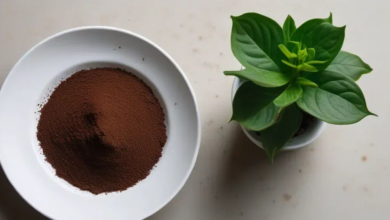
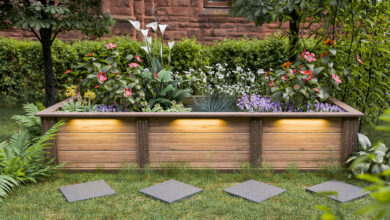
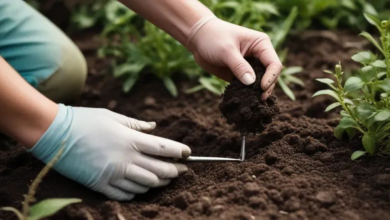
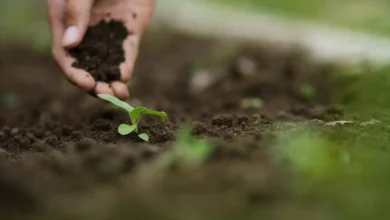

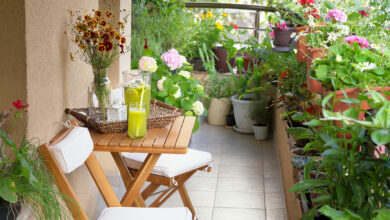
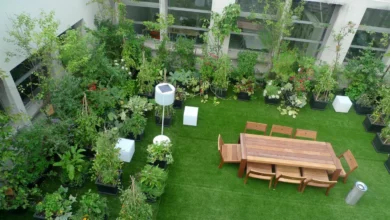

One Comment